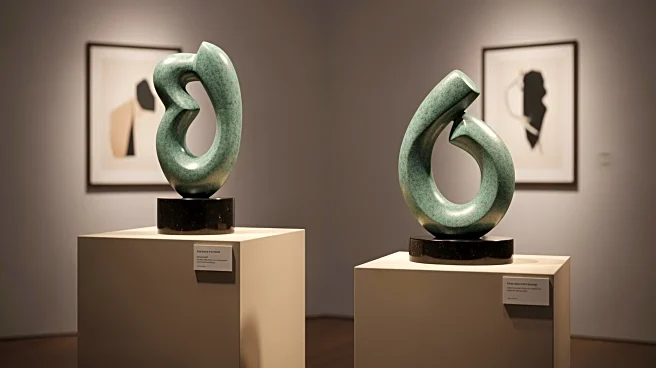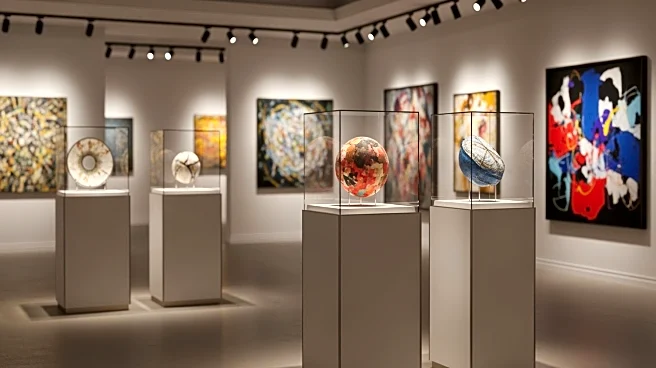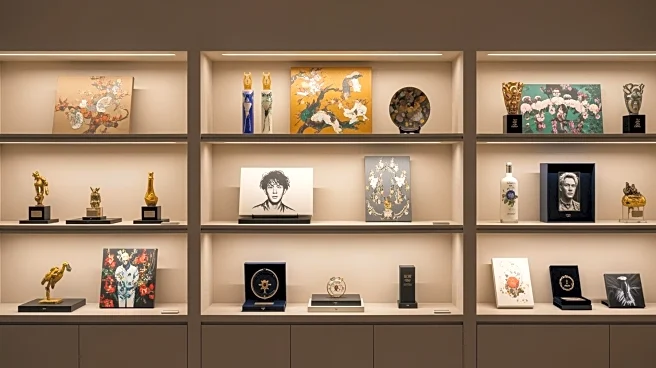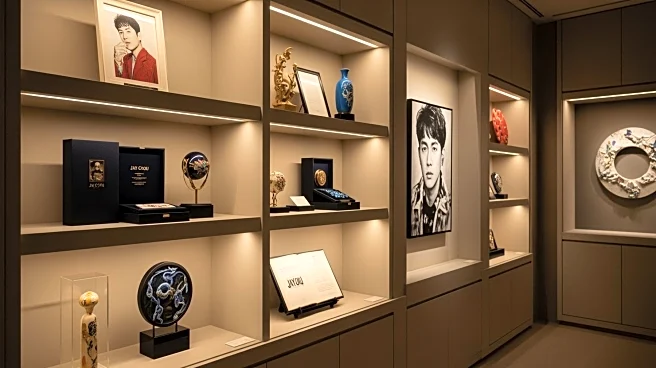What's Happening?
Christie's and Sotheby's, two leading auction houses, are reevaluating their business models in response to a stagnant art market. Both companies are shifting focus from traditional art auctions to a broader range of luxury goods, including jewelry, wine,
and collectible cars. This strategic pivot aims to address declining sales, with Christie's experiencing a 32% drop and Sotheby's a 25% decline between 2022 and 2024. Sotheby's has also embraced technology, enhancing its online bidding capabilities, while Christie's maintains a traditional approach, emphasizing expertise in art sales. Both houses are expanding their real estate presence, with Sotheby's acquiring the Breuer building in New York and Christie's extending its lease at Rockefeller Center.
Why It's Important?
The shift towards luxury goods reflects the auction houses' need to diversify revenue streams amid changing consumer preferences and economic conditions. The art market, valued at $57.5 billion, is dwarfed by the $386 billion luxury goods market, offering significant growth potential. By attracting clients through luxury sales, both houses hope to eventually transition them to art purchases. This strategy could redefine the auction industry, influencing other players to adopt similar models. However, the success of these initiatives depends on effectively engaging new buyers and adapting to evolving market dynamics.
What's Next?
Both Christie's and Sotheby's are likely to continue refining their strategies to capture a larger share of the luxury market. Sotheby's upcoming relocation to the Breuer building and Christie's expansion in Hong Kong signal ongoing investments in infrastructure to support these changes. As they compete for high-quality consignments, the auction houses may face challenges in balancing traditional art sales with luxury offerings. The effectiveness of these strategies will be tested in upcoming auctions, where the ability to attract discretionary consignors will be crucial.
Beyond the Headlines
The transformation of Christie's and Sotheby's highlights broader trends in the art and luxury markets, including the impact of generational wealth transfer and shifting consumer behaviors. As Millennials and Gen Z become more influential, their preferences for luxury goods over traditional art collections could reshape industry norms. Additionally, the integration of technology in auction processes may lead to increased accessibility and engagement, potentially democratizing the market.














